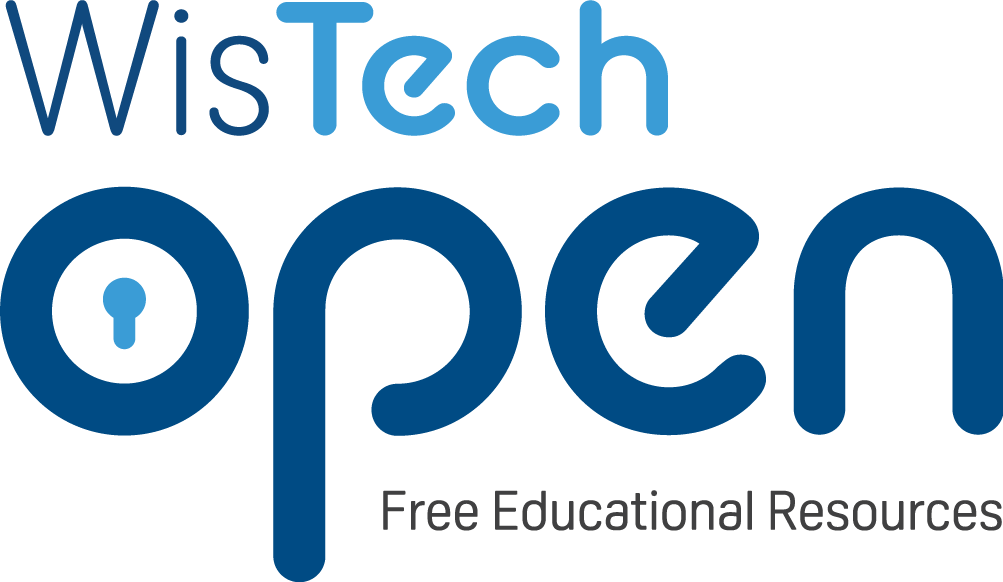Chapter 8: Valuing Responsible Grant Stewardship
“Finance is not merely about making money. It’s about achieving our deep goals and protecting the fruits of our labor. It’s about stewardship, and therefore, about achieving the good society.” ~ Robert J. Shiller
Course Competency: Value responsible grant stewardship
Learning Objectives:
- Prepare plan for site visits
- Review plans to meet grant terms and conditions
- Explain publicity plan for grant award
- Investigate options for developing rapport with grantee
8.1 Introduction
In grant management, stewardship is a core value. The funder wants to know that their money will not be misused and that the awardee will deliver long-term results from the funding. It is really important to build a team with a clear system built on ethics and leadership in place to deliver what was promised. In grant management, stewardship includes using funding wisely and transparently, being accountable to the donors and community served, and maximizing the impact of every dollar awarded.
8.2 Importance of Responsible Grant Management
Grant management is about honoring trust and building long-term credibility. In the grant process, this is demonstrated through outcome measurement, clear budgets, evidence of past success, and sustainability planning. Here are just a few key reasons why responsible grant management is important.
1. Accountability for Funders
Mismanagement of funds can lead to distrust and hinder future funding. Funders trust your organization with their resources to achieve a shared mission. They will expect to see evidence of impact, clear reporting, and compliance with all terms and conditions. Some government grants come with strict regulations. It is important to be able to demonstrate how your organization will be both legally and ethically compliant in use of funds and audits. There can be severe consequences, such as fines, for using grant funds on prohibited costs.
2. Efficiency and Impact
The better the organization is with handling spending resources, the more impactful the funding will be. Good management allocates funds strategically. This will ensure the funds go directly toward the intended outcomes of the grant, aligning the goals to the mission.
3. Public Trust and Sustainability
A great way to demonstrate sustainability is to teach others how to continue the work after the grant period ends. This Chinese proverb is a perfect example of sustainability: “Give a man a fish, and you feed him for a day. Teach a man to fish, and you feed him for a lifetime.” When an organization can bring long-term value something to a community, it builds its reputation and sometimes garners media attention. This may assist the organization in attracting multi-year or unrestricted grants.
4. Learning and Improvement
Being fiscally responsible and tracking outcomes allows the organization to collect quantitative data and identify what is working. This also allows the opportunity to identify and reflect on how to improve areas of weakness. As both qualitative data and quantitative data are collected, the resulting reported success stories will please stakeholders and funders, improving confidence in the grant team.
8.3 Ethics and Integrity in Grant Writing
Ethics in stewardship is about managing grant funds and programs with fairness, accountability, and transparency. It can also look like respecting the community and beneficiaries. The Grantmakers for Effective Organizations (GEO) believes that ethics are about being community-centered, not just funder-facing. Prior to writing the proposal it helps to design the project with, not just for, the people served[1]. Accurately describing needs or outcomes while seeking funding will demonstrate truthful representation. It is also ethical and responsible to avoid misleading statistics or inflating success rates when writing a grant. Further, ethical grant writers correctly cite information borrowed from outside sources as well as any models or tools developed in collaboration with others. They acknowledge partnerships and give credit where credit is due.
Integrity in grant writing includes being honest about your intentions. Outcomes or project goals should be achievable and supported by a sound plan. Integrity also includes doing the right thing even when no one is watching. Reflect on mistakes and be accountable. Share what was learned and how the data will improve outcomes.
In stewardship and reporting, ethics and integrity are of the utmost importance in maintaining positive relationships with funders. Below are a few examples of what ethics and integrity can look like in the grant-writing process.
Using Accurate Financial and Impact Reporting
- Do not falsify data, inflate numbers, or overlook budget discrepancies
- Submit truthful and timely reports even when outcomes fall short
- Ensure all required quantitative and qualitative data is collected and delivered to the funders on time
Spending Funds and Resources as Agreed
- Never reallocate funds without prior approval from the funding agency
- Only spend money on what is included in the approved budget
Maintaining Strict Confidentiality and Privacy
- Protect all personal information by handling participant data ethically
- Obtain consent for all stories and photos
Giving Gratitude and Acknowledgement
- Recognize the funder’s role in publications, media, and all communications during the grant period and after
- Thank any and all partners who contributed to the success of the grant
8.4 Ensuring Accountability and Transparency
To ensure the grant team understands who at the organization is responsible for what during the grant period, it is common to create a table that denotes the various elements of the project with descriptions and requirements. A table like the one below adds transparency to the project and could be used to track milestones or action items.
| Element | Purpose | Responsible Party | Tools/Methods | Frequency |
|---|---|---|---|---|
| Grant Agreement | Defines expectations and obligations | Grantor and Grantee | Signed contract, terms and conditions | At project initiation |
| Budget Tracking | Ensures proper use of funds | Project manager, Finance | Accounting software, spreadsheets | Monthly |
| Milestone Reports | Tracks progress and deliverables | Project lead | Timelines, Gantt charts, status reports | Monthly/ quarterly |
| Expenditure Reports | Provides detailed spending accountability | Finance team | Financial statements, receipts, audits | Quarterly |
| Independent Audit | Validates financial integrity | External auditor/evaluator | Audit reports, financial reviews | Annually |
| Stakeholder Updates | Informs stakeholders | Communications officer/Project lead | Newsletters, email updates, webinars | Bi-monthly |
| Performance Metrics | Measures outcomes and impacts | Evaluation team | Key performance indicators, surveys, evaluation reports | Middle and end of project |
| Transparency Portal | Public access to grant progress and spending | IT, Compliance team | Web dashboard, public data-sharing | Live/monthly updates |
| Issues/Concerns | Handles complaints and disputes | Compliance officer | Hotline, grievance system | As needed |
| Final Project Report | Summarizes achievements, lessons, and financials | Project team | Narrative and financial report | End of project |
Access, download, or print the Grant Project Accountability Table. You can also select “File,” then “Make a Copy,” and you will have your own to modify to suit your needs.
8.5 Case Study: Successful Grant Stewardship Practices
Wisconsin is a beautiful state full of much more than just countryside and farm animals. With a total of 16 technical colleges and 56 four-year colleges, Wisconsin has been awarded many grants to aid in the development of industry, education, youth services, and workforce. Below are some insights from grant writers living and working in the state of Wisconsin and surrounding areas.
Dr. Anne Hoeltke
Long-time Minnesota consortium grant director Dr. Anne Hoeltke said, “Embedding sustainability into a grant proposal is not just a commitment to being a good steward; it’s a pledge to foster long-term social and economic resilience, ensuring that funded projects continue to benefit communities and science and research well into the future.”

Jodi Petersen
Jodi Petersen, a Youth Justice Supervisor in Portage, Wisconsin, shares how the youth in her area now have an effective alternative to being issued youth justice referrals because of the community-developed Youth Enrichment Services (YES) program. When a youth is referred to the program, the YES specialist meets with the youth and their parent or guardian to review program expectations. The YES social worker then completes evidence-based assessments of the youth’s behavior and social history. Based on the results of these assessments and collaboration with the youth, parents, school, and other providers, an individualized plan is created for each youth to determine which services will provide the greatest benefit. These services could include art therapy, music activities, Taekwondo, Carey Guides, BITs programming, and other evidence and research-based programs. The results are seen in the absence of future duplication of services.

Sarah King
Sarah King, a Stateside Grant Director at Mid-State Technical College in Stevens Point, Wisconsin, says that when it comes to transparency and stewardship with both grantors and her grant team project members, she will always try to “4-C” the grant administration process—focus on communication, collaboration, commitment, and clarity. This is a great philosophy for open and ongoing sharing of successes, changes, and problems.

8.6 Conclusion
Knowing where funds go and how they are used during the duration of the grant ensures that the recipients have been responsible and followed through with their plan. Many grants have one- to three-year time frames, and recipients can reapply to continue projects.
As mentioned in the introduction, this Proposal & Grant Writing textbook is the toolbox for learning how to craft compelling, fundable proposals that make a real-world impact. You have learned everything from making decisions about the kind of grants that will suit your organization best to being honorable as a trusted recipient of funding. Keeping your community in mind is essential as you navigate every step of the grant-writing process. Partnering with others can increase the likelihood of being awarded funds and achieving long-term sustainability. The futures of many businesses and communities depend on receiving outside help. Being strategic and ethical in proposal and grant writing can change your life and the lives of those around you.
8.7 Learning Activities
- Lopez, A. (2022). Community in philanthropy: What it is, why we need it, and how we can build it. Grantmakers for Effective Organizations (GEO). https://www.geofunders.org/news/community-in-philanthropy-what-it-is-why-we-need-it-and-how-we-can-build-it ↵
The ongoing commitment to build and maintain relationships with grant funders and the community after the grant has been awarded.
Financial gifts or grants provided to a nonprofit organization without specific usage limitations allowing them to allocate the funds as needed.
Non-numeric, descriptive information that focuses on concepts and characteristics rather than numbers and statistics. It is collected through methods like observations, interviews, surveys, and focus groups.
Numerical data that can be counted, measured, and expressed as numbers. It is data that can be subjected to mathematical and statistical analysis. Examples include age, height, weight, temperature, and scores on a test.

